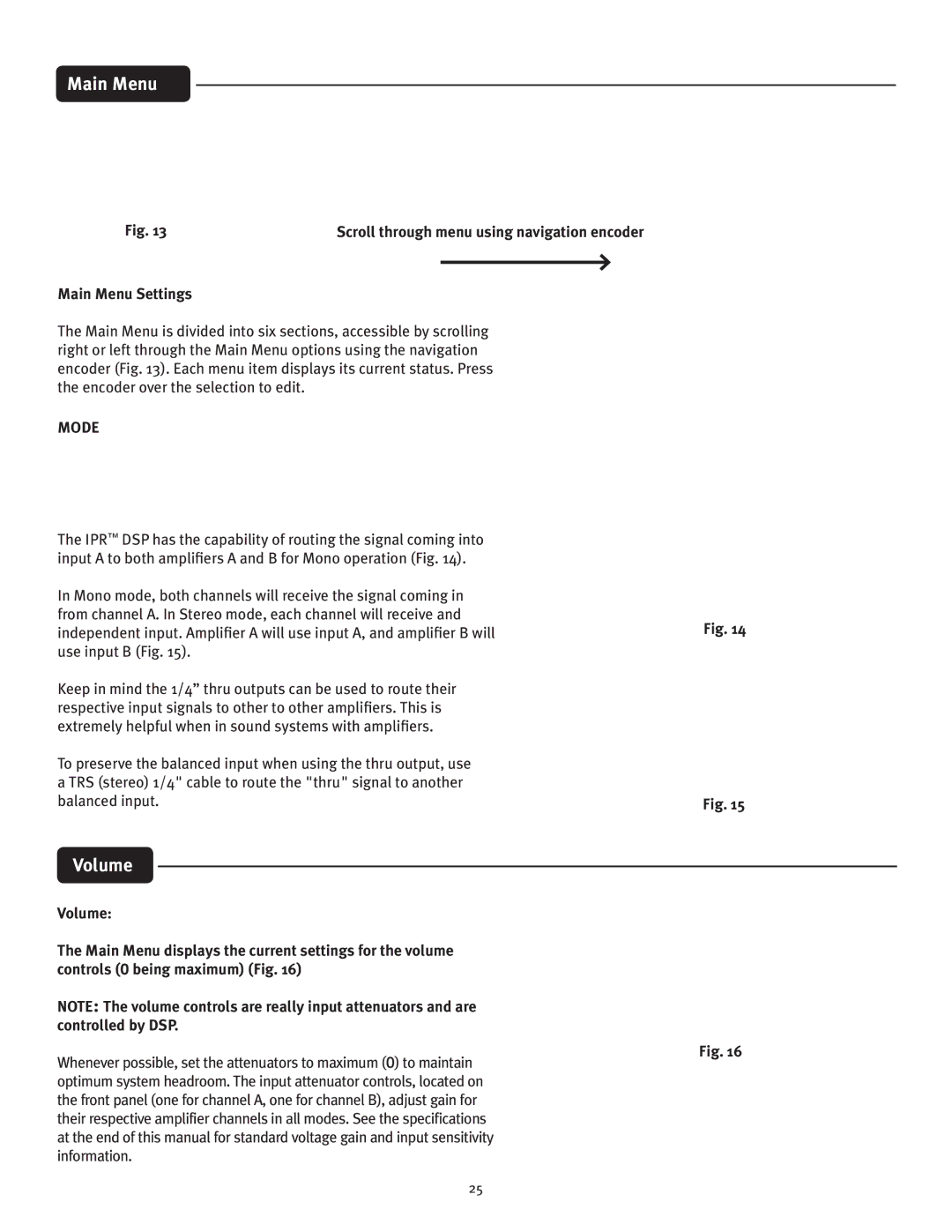
Main Menu
Fig. 13 | Scroll through menu using navigation encoder | ||
|
|
|
|
Main Menu Settings
The Main Menu is divided into six sections, accessible by scrolling right or left through the Main Menu options using the navigation encoder (Fig. 13). Each menu item displays its current status. Press the encoder over the selection to edit.
MODE
The IPR™ DSP has the capability of routing the signal coming into input A to both amplifiers A and B for Mono operation (Fig. 14).
In Mono mode, both channels will receive the signal coming in from channel A. In Stereo mode, each channel will receive and independent input. Amplifier A will use input A, and amplifier B will use input B (Fig. 15).
Keep in mind the 1/4” thru outputs can be used to route their respective input signals to other to other amplifiers. This is extremely helpful when in sound systems with amplifiers.
To preserve the balanced input when using the thru output, use a TRS (stereo) 1/4" cable to route the "thru" signal to another balanced input.
Fig. 14
Fig. 15
Volume
Volume:
The Main Menu displays the current settings for the volume controls (0 being maximum) (Fig. 16)
NOTE: The volume controls are really input attenuators and are controlled by DSP.
Whenever possible, set the attenuators to maximum (0) to maintain optimum system headroom. The input attenuator controls, located on the front panel (one for channel A, one for channel B), adjust gain for their respective amplifier channels in all modes. See the specifications at the end of this manual for standard voltage gain and input sensitivity information.
Fig. 16
25
